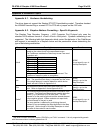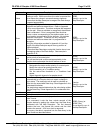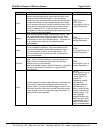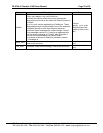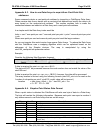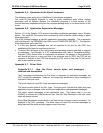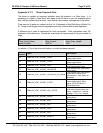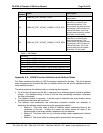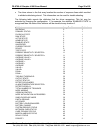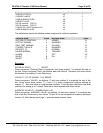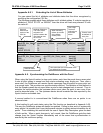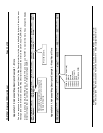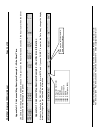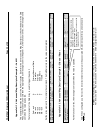
FS-8700-41 Simplex 4100 Driver Manual Page 28 of 58
FieldServer Technologies 1991 Tarob Court Milpitas, California 95035 USA Web:www.fieldserver.com
Tel: (408) 262-2299 Fax: (408) 262-2296 Toll_Free: 888-509-1970 email: support@fieldserver.com
Stat
number
Stats Description
23 SIM4100_STAT_XPOINT_YEAR
The Date from most recent
xpoint store
24 SIM4100_STAT_XPOINT_COMBO_STATE_OLD
A single point could potentially
be active in more than one
state simultaneously. The
driver tracks the combine state
by building a UINT whose bits
indicate the state. This is the
combo state before the update.
See Note 1 for bit states.
25 SIM4100_STAT_XPOINT_COMBO_STATE_NEW
A single point could potentially
be active in more than one
state simultaneously. The
driver tracks the combine state
by building a UINT whose bits
indicate the state. This is the
combo state after the update.
See Note 1 for bit states.
Note 1 – Bit States.
Qualifier:
Enum=0 Qual=F Fire alarm state
Enum=1 Qual=P Priority 2 alarm state
Enum=2 Qual=T Trouble state
Enum=3 Qual=S Supervisory state
Enum=4 Qual=U Utility monitor, digital/analog pseudo state
Enum=5 Qual=C Control state (non pseudo)
Enum=6 Qual=D Disable Trouble state
Appendix A.8. SHOW Function Attributes and Attribute States
The Show command provides an ASCII response formatted for printing. The driver parses
these messages and converts the data to numbers which can be sent to upstream devices
using another protocol.
The driver performs the following tasks in analyzing the response.
• On a line by line basis from the left, it searches for an attribute against a table of attribute
strings. If an attribute string is found in the line then processing continues. Otherwise
the line is discarded.
• The attribute number is recorded. It will be used to determine the array location where
the attribute state/value will be stored.
• The attribute also determines the state/value extraction method and attempts to
determine the attribute state/value using the appropriate method.
o Method 1: The driver uses a table of attribute states, comparing them to the
remainder of the line. If there is a match the driver stores the value of the
attribute state in the array location determined by the attribute,
o Method 2: The driver looks for (up to three) analog values separated by forward
slashes.
o Method 3: The driver looks for analog values preceded by an equal sign.



